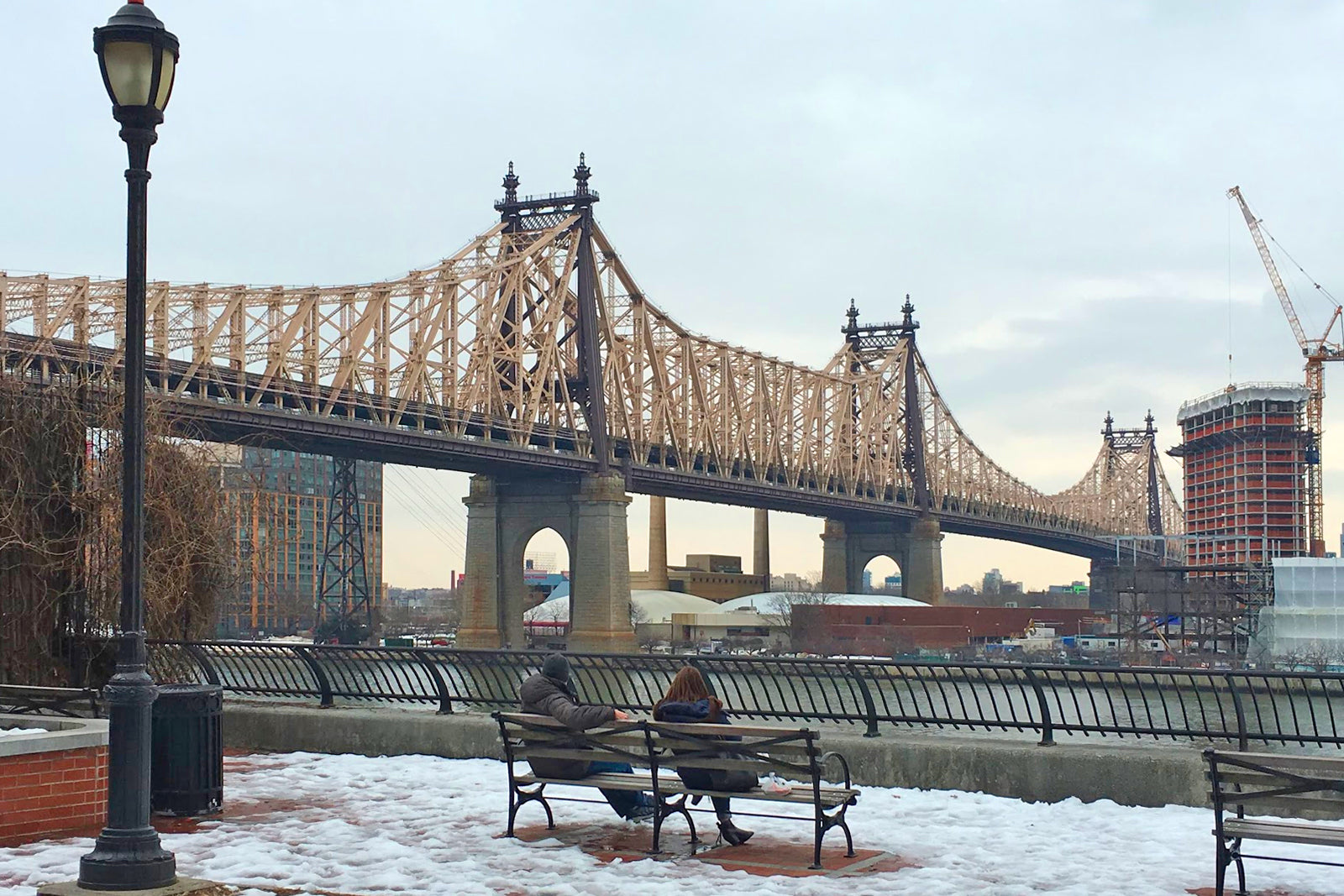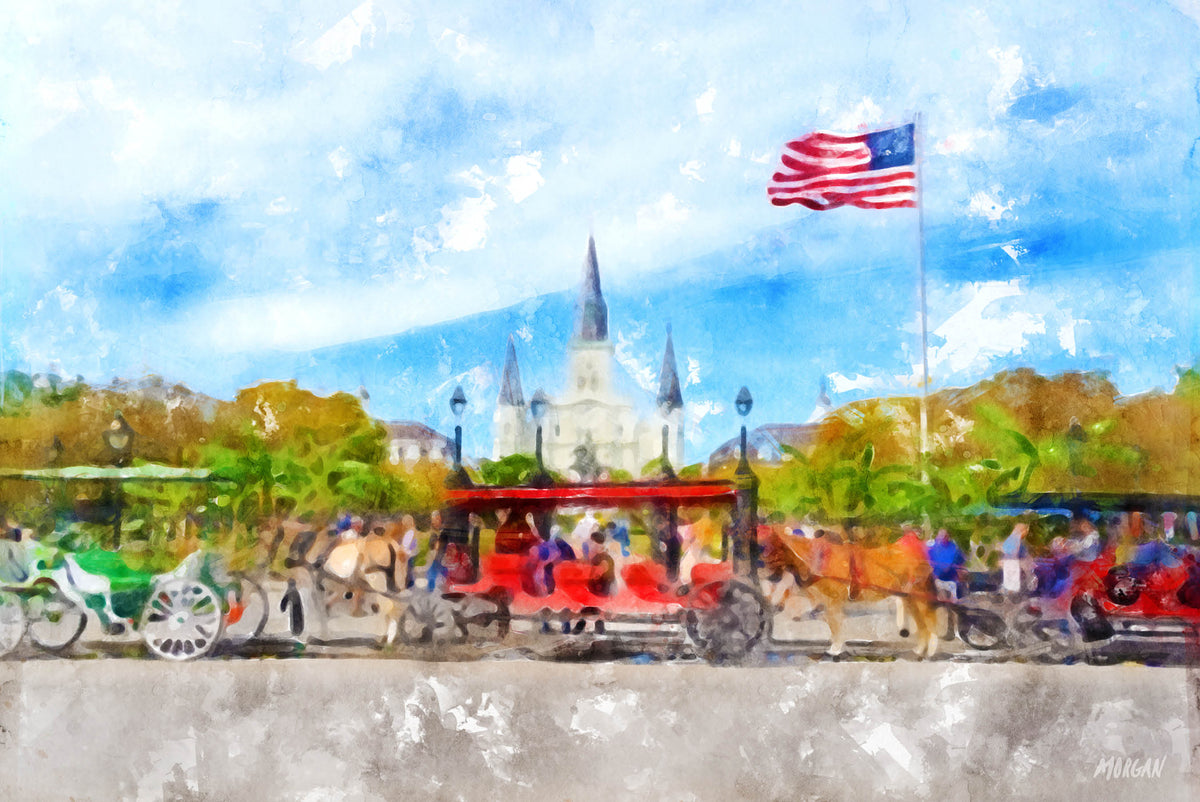
Queensboro is king! Built for $18 million more than 100 years ago, the Queensboro Bridge is one of New York City's most popular landmarks, including amongst the locals.
Despite its popularity, very few people know about the bridge. Some people even call it by the wrong name, labeling it "the 59th Street Bridge." If you want to call yourself an expert on New York City landmarks, you need to do a deep dive into Queensboro.
Who built the Queensboro Bridge, and how has it changed over time? How can you use the bridge? What art can you get depicting the bridge?
Answer these questions and you can become a true master of New York City history and art. Here is your comprehensive guide.
Building the Queensboro Bridge
During the 19th century, Queens and Manhattan were not connected to each other. During the 1830s, businesspeople and politicians proposed building a bridge that would connect Manhattan to Long Island City, a neighborhood in Queens.
However, Manhattan and Queens were in different county governments. This made it hard to coordinate projects and raise money for bridges.
In 1898, Greater New York City was created. Manhattan and Queens were joined together under one government, along with the other three boroughs.
In 1902, Gustav Lindenthal was appointed to be the Commissioner of Bridges in New York City. Lidenthal decided that a bridge between Queens and Manhattan needed to be built, and he commissioned the project.
He hired Leffert Buck and Henry Hornbostel to design and build the bridge. The two had designed the Williamsburg Bridge, and they decided to use a similar design for Queensboro.
In 1903, construction began. Part of the bridge collapsed during a storm, and 50 workers died due to accidents during construction. But construction ended in 1909 and the bridge was opened to the public on March 30 of that year.
Changes During the Early Years
The designers of the bridge created pedestrian walkways on the upper level. There were also two elevated railway tracks, allowing people to use public transportation.
However, cars became increasingly popular during the early 1900s. In 1931, the upper-level walkways were replaced with three lanes of roadways. Railway service on the upper level stopped in 1942, and the city added two more roadways in the 1950s.
On the lower deck, the designers had a trolley lane. Passengers could ride between Queens and Manhattan, or they could stop in the middle of the bridge. They could then walk down a flight of stairs to Roosevelt Island.
In 1957, this trolley service stopped. The city removed the trolley lanes and added lanes to allow cars to use the lower level.
The city repainted the bridge in 1966, a project that cost $240,000. Some people protested the change, and in 1973, the city designed the bridge as a city landmark. This means that the bridge cannot be modified unless the Landmarks Preservation Commission approves it.
Recent Developments
In 2009, the city celebrated Queensboro's centennial. The government formed a centennial commission that organized walking tours, ceremonial parades, and concerts on the bridge.
The next year, the city announced that the bridge would be renamed. The bridge is officially called "the Ed Koch Queensboro Bridge." This decision is unpopular with many locals, and most people refer to the bridge as "the Queensboro Bridge."
In 2021, the city began to install a bike path on the lower level of the bridge. They also decided to renovate the upper deck. These renovations are ongoing, and they can cause congestion and lane closures on the bridge.
The Bridge's Structure
The bridge is a cantilever bridge, meaning it is a horizontal structure that is supported on one end. A truss lies in the center of the bridge, giving it additional support. The bridge is 3,725 feet long.
The bridge currently has two levels. The upper level supports four lanes of traffic, two each in direction.
Traffic lanes fan out, with westbound traffic going to 62nd and 63rd Streets and eastbound traffic going to 57th and 58th Streets. The lower level has five vehicle lanes and a pedestrian walk.
If you approach the bridge from Manhattan, you can find a series of Gustavino tile vaults. These vaults provide structure to the bridge and were intended to create a ceiling for food markets and restaurants. A Trader Joe's branch is currently within this area.
Using the Bridge in New York City
On average, more than 145,000 vehicles use the Queensboro Bridge each day. That's more than one vehicle every second. In order to avoid congestion, you should figure out how to use the bridge correctly.
Cars
If you're driving from Manhattan, you can enter the bridge by turning left from 2nd Avenue between 59th and 60th Streets. If you're traveling north, you can turn left onto 59th Street from 1st Avenue, drive half a block, and then turn right to get onto the bridge.
These directions will get you to the lower level. Getting on the upper level is a little trickier, so you should prioritize the lower level whenever possible. The upper level also tends to have more congestion and renovation work, so you may find it easier to drive on the lower level.
You can enter the upper level by going north off 57th or 58th Street. Once you see signs for 21st Street, you should proceed in the right lane to a traffic light. You will then find the bottom of the ramp, and you can get onto the bridge.
The easiest way to get to the bridge from Queens is to travel down Route 25A. You can then turn onto the Queensboro Bridge Greenway and drive it all the way to the bridge. Follow road signs to get to the upper or lower level.
The bridge has a temporary height restriction on all vehicles over 12 feet tall. Trucks can only travel on the lower level.
Public Transportation
Though the bridge no longer has streetcar and trolley tracks, Queensboro is still a major route for bus routes in New York City. The Q32, Q60, and Q102 routes use both sides of the bridge on a regular basis.
The bridge also supports 20 express bus routes from Manhattan to Queens. These routes rely on the Queens-Midtown Bridge to get from Queens to Manhattan. The bridge is south of Queensboro, so you may need to find a route north in order to get to your destination.
The nearest subway stop to the bridge is Lexington Avenue-59th Street. You can get to this stop through the 4, 5, 6, N, R, and W trains and then walk two blocks east to get to the bridge. The Queens end of the bridge is near Queensboro Plaza, which is an elevated train station.
Pedestrians
If you're in Manhattan, the pedestrian entrance is on East 60th Street, which is halfway between First and Second Avenues. If you're in Queens, you can walk onto the bridge at Crescent Street and Queens Plaza North. You cannot use Queensboro Plaza to walk onto the bridge.
There is one pedestrian lane on the bridge, which can make walking or biking on the bridge difficult. But the ground is smooth and even, so you will not have too much difficulty once you've navigated through traffic.
You can see many New York landmarks as well as other New York bridges from your view. On a clear day, you can see the World Trade Center, Empire State Building, and East River bridges. You can take photographs or draw what you see, but make sure you're not in anyone's way.
There are no vendors on the bridge. Some people need roughly 30 minutes to walk across Queensboro, so if you need food or water, you should get it from the Trader Joe's store inside the bridge.
Queensboro and Popular Culture
Like the Statue of Liberty, the Queensboro Bridge has had an enormous effect on popular culture. If you've seen New York bridges in a movie or TV show, you've probably seen the Queensboro Bridge.
It has been featured in Manhattan, Home Alone 2, and Spider-Man, amongst other popular movies. You can also spot the bridge in the credits of several television shows, including The King of Queens.
Many artists have produced works of art featuring the Queensboro Bridge, including greeting cards. You can also visit art stands around the bridge and buy works from local artists.
The Essentials of Queensboro Bridge
The Queensboro Bridge may be the most beloved bridge in New York City. The bridge has been a lifeline between Manhattan and Queens for more than 110 years. Though the city has made changes to the bridge over the decades, the main structure has stayed the same.
Hundreds of thousands of cars, trucks, pedestrians, and bicyclists use the bridge every day. Hollywood directors and Queens artists have used the bridge as inspiration for movies and paintings.
Queensboro can inspire you, too. G.O.A.T House of Creative provides premium Queensboro paintings. Browse our collection now.




